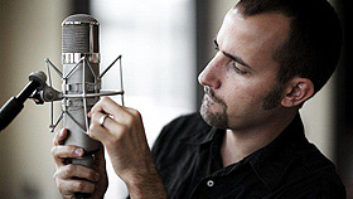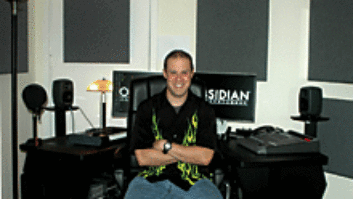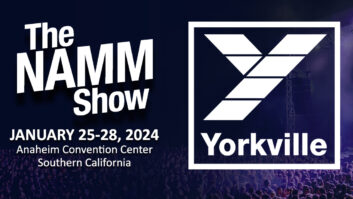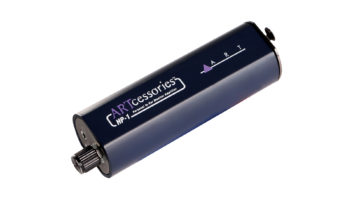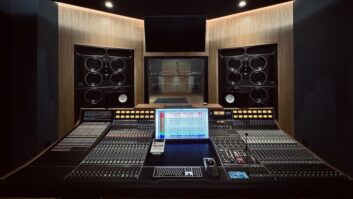Admittedly, the beginning of a recording project is the best part; all the optimism, all the teamwork, and all the focus on the big picture is energizing, challenging and fun.

Conversely, the end of a recording project is almost always the most taxing and the least rewarding part. This is exacerbated by the shift to focusing on the individual; the endless detail and minutiae of editing; the seemingly infinite mix tweaks allowed by our DAWs; and so on.
Oddly enough, it’s the requisite rough mixes during a project that are often the pivotal point: the fulcrum between peaceful group-think and the compromise of personalities and artistry that actually completes records.
I Absolutely Love Rough Mixing …
In my ideal world, I let the first rough be nothing but a mirror of performance; without all but the most mandatory edits, with minimal EQ and processing, it’s actually raw, but quite hi-fi. Breathing with natural dynamics and unfilled space, the “organic rough” is a rare opportunity to hear what an ensemble really sounds like, allowing the imagination to run wild (especially for the artist) to envision what to do with all that unused space.
As overdubs commence, the rough mixes necessarily increase in complexity. In my ideal sonic nirvana, I stretch out with these mixes and take all kinds of chances, hoping to find something new and unexpected. I’ll try a new outboard combination in my parallel processing, or try a new plug-in on a track, or even try some over-the-top effect-goosing in hopes of either finding something useful, or clearly illuminating the wrong path.
After all my little experimental excursions have been exercised, it’s time to try some roughs that are dress rehearsals for the final mixes. Using the knowledge of the polarizing experiments, I’d put together my most idealized mix at this point and try to weed out any problems, all aided by having the band monitor these mixes on all their own favorite systems for meaningful feedback.
When It Helps
Yet such a process doesn’t always work so well. First of all, you’d best cover your ass with that first organic rough by asking the band if they’d like to hear it that way, or if some polishing would be preferred. Some modern performers wouldn’t dream of hearing their part without at least minimal quantizing, tuning, EQ-ing and squeezing first; they would likely find my organic rough to be faulty to the point of questioning (not their own, but) my competence. If your tracking method relies on drum triggering, virtual amplification and/or take comp-ing, then you may have to get your hands dirty up past your elbows before you can even present your first rough to a client.
Risky Business
In “stage two” rough mixing — where I like to stretch out all options — the risks are sometimes overwhelming. Remember, a lighthearted stab at over-effecting is loose fun for us … and often a call to arms for a performer that fears their parts will be draped in cornball excess for perpetuity. I suggest you ask before adding, for example, echo to much of any track; it has been my experience that a couple of seemingly harmless repeats on the end of a vocal line will incite some singers to near-violence (or at least prevent you from adding much more than a double for the rest of the project).
By the time you get to “stage three,” your roughs had better be about as good as “What’s On The Radio” … or you might be in trouble. A nearly-perfect rough is actually just the start; the new normal is some “temp mastering” (an EQ, compressor and limiter, often all set to “stun”) on roughs, so artists don’t panic over low levels.
When Roughs Become Finals
The flip side to all this? If the roughs are too good, they may get unintended distribution: anxious artists posting their roughs on the web; unintended leaks to the public via insider “moles;” or a manager getting airplay with a rough mix (don’t laugh, I’ve been there and hated that last one). If people think a rough sounds finished, then it may get overexposed. Therefore, some engineers make awesomeroughs with one or two intentionally major flaws (e.g., a sudden and ridiculous fader move or the omission of a key part), but this isn’t as effective as you might think it would be. You might be viewed as having odd mistakes in your work; you’re suddenly stuck with replicating such audio insanity as part of the final mix; or you’re hearing that audio silliness you created played back on Facebook, as social commentary and inspection circle it.
As fun as rough mixing can be, the modern working audio engineer should take a moment to insure their methods and goals are acceptable to the whole team. A rough mix is going to cause divisiveness and create sometimes strong opinions, but such discussion and compromise is exactly what’s required in our art, the psychological science of making records.
Rob Tavaglione has operated Catalyst Recording in Charlotte, North Carolina since 1995.catalystrecording.com

